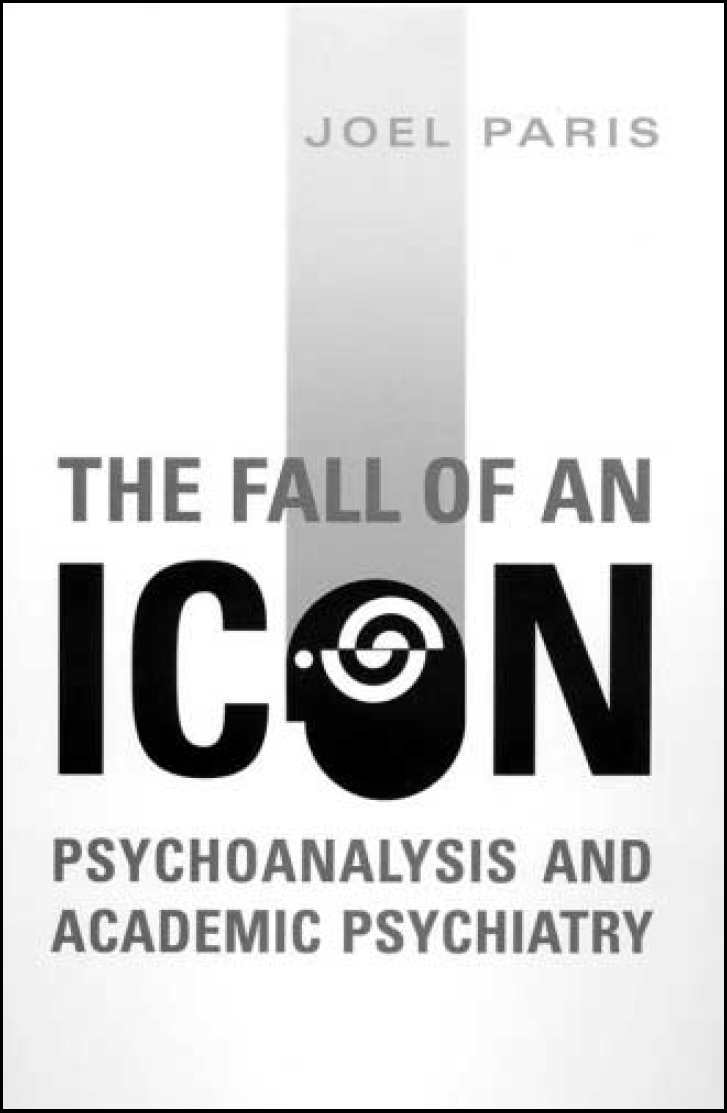
From a British perspective, the idea that psychoanalysis might ever have played a central role in academic psychiatry is scarcely believable – and from your reviewer's point of view highly enviable. Yet for a generation almost every Chair of psychiatry in the USA was occupied by a psychoanalyst. From 1950 to the mid-1970s personal analysis was an essential part of psychiatric training; being able to listen to and interpret patients’ feelings and fantasies were as important skills as mastering the latest drug and its side-effects. Today all has changed: with a few honourable exceptions (Glen Gabbard in Texas is the outstanding example), those same prestigious seats are now occupied by geneticists, psychopharmacologists and neurobiologists, while trainees learn how to set up their office practice for 15 minute drug reviews, leaving psychotherapy (usually time-limited and cognitive) to psychologists and social workers.
Joel Paris is a US-trained Canadian personality disorder researcher and Professor of Psychiatry in Montreal. In this compulsively readable account – part history of American psychiatry, part personal memoir, part anti-psychoanalysis hatchet-job – he charts the decline and fall of academic psychoanalysis. He describes the immense charisma of the psychoanalytic émigrés – but their failure to brook any opposition. He bemoans the lack of solid evidence for the efficacy of psychoanalytic treatments. He makes great play of the Osheroff case at Chestnut Lodge, where a depressed physician successfully sued the psychoanalytic Mecca, Chesnut Lodge in Washington, for failing to treat him with antidepressants. He accuses psychoanalysts of ignoring those with severe mental illness, and concentrating on ‘easy’ cases that would have improved anyway.
He is thus something of a cult escapee, and therein lies the weakness of a book that is more polemic than balanced assessment of the case for and against psychoanalysis. It perpetrates many of the very faults of which he accuses his adversary. He relies on anecdote and personal experience–‘none of Professor X's cases ever got better’, etc., tendentiously cites those research findings that support his case, but plays down contrary evidence. Attachment theory gets a grudging thumbs-up for being generally evidence-based, but contemporary psychoanalysts like Fonagy, Bateman, Westen, Kernberg, Schore and Solms, who are attempting to integrate attachment theory with neurobiology, are portrayed as mavericks rather than the leaders of a new psychoanalysis committed to outcome studies, integration with modern neuroscience, and forging links with other psychotherapies such as cognitive – behavioural therapy.
Seeing that the quasi-parental gods of one's youth have clay on their boots is a necessary part of maturation; but sadly, Paris's disillusionment is more catastrophic than optimal. In the ever-skeptical UK things are different: perhaps the marginalisation of psychoanalysis here means, ironically, that it can still claim its rightful place as an essential component of psychiatric education and research. Rumours of psychoanalysis's death continue to be exaggerated.



eLetters
No eLetters have been published for this article.